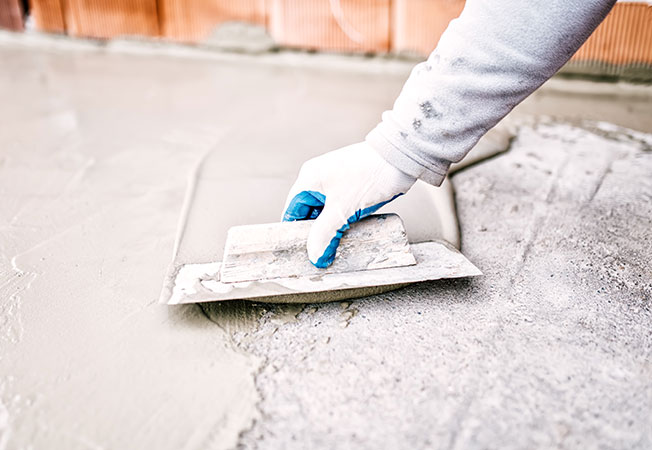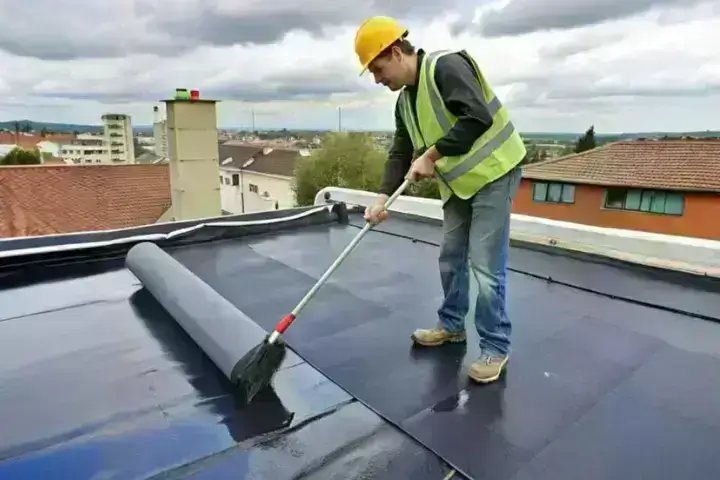Water Solutions That Actually Work: Omaha’s Most Effective Systems
Wiki Article
How Waterproofing Works: A Detailed Consider Techniques and Technologies
Waterproofing is necessary for shielding frameworks from moisture-related damages. It includes different techniques and innovations that create barriers versus water breach. Typical approaches, such as compressed clay, exist side-by-side with modern innovations like liquid-applied membranes. Understanding the nuances of these techniques is crucial for efficient application. The efficiency of any waterproofing solution hinges not only on the strategies utilized but additionally on recurring upkeep and examination. What are the vital elements that affect long-lasting performance?Recognizing the Fundamentals of Waterproofing
Waterproofing is a vital process that secures structures from water intrusion, which can bring about considerable damages in time. This approach includes the application of different materials and methods designed to produce an obstacle against moisture. The key goal is to protect against water from permeating surface areas, which can trigger degeneration, mold growth, and structural instability.Various factors influence the selection of waterproofing method, consisting of the kind of structure, its area, and environmental conditions. Comprehending the physics of water motion and the properties of different materials is essential in selecting an efficient waterproofing solution.Effective waterproofing not only safeguards structures yet also enhances their durability and stability. Normally, it is integrated right into the style stage of building and construction to guarantee complete protection. As awareness of water-related issues grows, the relevance of understanding waterproofing fundamentals becomes progressively clear to designers, home builders, and building proprietors alike.Traditional Waterproofing Methods
Traditional waterproofing techniques have actually been made use of for centuries, relying upon reliable strategies and products to secure structures from water damage. Among the earliest techniques includes making use of clay, which, when compacted, creates an all-natural obstacle against wetness. In addition, asphalt, a sticky, black material originated from oil, has actually been utilized for its waterproof homes, typically put on roofs and foundations.Another strategy entails the application of lime-based plasters, which give a breathable layer that enables moisture to run away while protecting against water access. Thatch roof, a conventional method still seen in some societies, provides excellent waterproofing due to its firmly packed straw layers.Moreover, using rock and brick has actually projected, as these materials are inherently immune to water when correctly installed. On the whole, typical waterproofing approaches stress the significance of picking suitable products and building techniques to enhance durability versus water invasion.Modern Waterproofing Technologies
Advancements in modern waterproofing modern technologies have changed the way frameworks are shielded from water damages. Innovative techniques such as liquid-applied membranes and sophisticated sealers have actually boosted the efficiency and versatility of waterproofing options. These modern technologies enable smooth application, reducing the threat of leaks and making sure extensive insurance coverage over intricate surfaces.Moreover, the integration of smart modern technologies, such as moisture sensors and automated tracking systems, makes it possible for real-time analysis of waterproofing performance. This proactive method assists in prompt upkeep and minimizes lasting repair costs.Additionally, developments in spray-applied finishes supply fast application and excellent attachment, adjusting to numerous substratums while giving durable security. Methods like polymer-modified systems additionally boost adaptability and durability, making them ideal for varied settings. Generally, contemporary waterproofing innovations not only reduce water intrusion but additionally add to the durability and sustainability of frameworks, noting a substantial shift in the industry.Products Utilized in Waterproofing
The effectiveness of waterproofing solutions greatly depends on the materials made use of in their application. Different materials are utilized to create obstacles against water access, each with one-of-a-kind homes matched for various environments. Generally utilized materials consist of membranes, finishings, and sealants.Liquid-applied membrane layers, commonly made from polyurethane or acrylic, form a smooth barrier that adapts to intricate surfaces. Sheet membrane layers, generally created from rubber or thermoplastic, deal durability and are excellent for larger locations. Additionally, cementitious waterproofing materials, made up of cementitious compounds, provide superb adhesion and flexibility.Sealants made from silicone or polyurethane are necessary for joints and seams, making certain extensive protection. Advanced materials, such as geo-composite membranes, combine several features, boosting efficiency. Overall, the choice of waterproofing products is important in accomplishing durable and reliable water resistance, tailored to specific project demands and ecological problems.
Usual Applications of Waterproofing
Waterproofing plays an important role in different sectors, guaranteeing the long life and integrity of frameworks. Common applications include residential solutions that protect homes, business facilities that safeguards businesses, and commercial setups that call for robust protection versus moisture. Recognizing these applications highlights the importance of waterproofing in preserving both safety and functionality across different environments.Residential Waterproofing Solutions
Several homeowners encounter challenges with dampness breach, making effective household waterproofing imp source remedies essential. Different approaches exist to address this issue, consisting of exterior and interior waterproofing systems. Inside services typically include the application of sealants and layers to basement wall surfaces, which help prevent water infiltration. Exterior methods commonly include the setup of water drainage systems and waterproof membranes that draw away water away from the foundation.Additionally, property owners might take into consideration sump pumps to eliminate water buildup and dehumidifiers to manage humidity degrees. Proper grading and using rain gutters additionally play an essential duty in managing water circulation around the home. By carrying out these techniques, property owners can greatly lower the risk of water damage and mold and mildew development, guaranteeing a completely dry and safe living environment.
Commercial Framework Protection
Reliable waterproofing services play a vital duty in the defense of industrial infrastructure. Drainage & waterproofing company Omaha. These techniques are vital for protecting buildings, vehicle parking structures, and bridges from water damages, which can jeopardize architectural stability and bring about expensive fixings. Usual applications include the installation of membranes, finishings, and sealants that produce barriers against wetness infiltration. Areas such as cellars, roof coverings, and exterior wall surfaces are usually prioritized to ensure long life and longevity. Additionally, waterproofing systems can boost power efficiency by protecting against water-related concerns that might result in mold growth and deterioration. By implementing durable waterproofing steps, homeowner can shield their financial investments and maintain functional performance, ultimately adding to the total sustainability of business centersIndustrial Applications Overview
While numerous markets deal with distinct difficulties, the demand for trustworthy waterproofing solutions continues to be a continuous in industrial applications. Industries such as manufacturing, construction, and power typically run into settings where moisture exposure can jeopardize architectural stability and functional performance. In making facilities, waterproofing is vital for protecting machinery and materials from water damage. In construction, it safeguards foundations and basements against groundwater infiltration. The energy sector counts on waterproofing for the security of devices in hydroelectric plants and overseas structures. In addition, food handling sectors use waterproofing to guarantee hygiene and compliance with safety and security criteria. On the whole, reliable waterproofing services are important for boosting sturdiness, safety, and efficiency throughout various industrial settings.
Maintenance and Durability of Waterproofing Solutions
Waterproofing services are created to provide long-term security versus wetness breach, routine maintenance is vital to ensure their efficiency and longevity. Regular assessments play a significant duty in determining possible problems such as fractures, peeling, or signs of water damage. Attending to these issues without delay can prevent further deterioration and costly repairs.Additionally, cleaning up the surface of waterproofed areas assists remove dirt and particles that might endanger the stability of the waterproofing obstacle. It's additionally advisable to reapply protective layers or sealants as suggested by makers to maintain optimal performance. Environmental variables, such as UV exposure and severe weather conditions, can affect the life expectancy of waterproofing materials, making regular assessment importantRegularly Asked Questions
Can Waterproofing Be Applied in Winter?
The inquiry of applying waterproofing in cold climate raises worries regarding attachment and healing. Several items might not do at their ideal in reduced temperatures, my review here necessitating cautious selection and factor to consider of particular guidelines for effective application.For How Long Does Waterproofing Usually Last?
The period of waterproofing efficiency differs based on materials and ecological factors. Usually, it can last from 5 to 10 years, yet routine upkeep and examinations are necessary to assure peak efficiency and long life.Is Do It Yourself Waterproofing Effective and Safe?
The performance and safety and security of do it yourself waterproofing depend upon different variables, consisting of material quality and application technique. While some people attain adequate outcomes, others might experience issues that compromise long-lasting protection and structural stability.What Are the Signs of Failing Waterproofing?
Indications of falling short waterproofing include visible water discolorations, peeling paint, mold and mildew development, mildewy odors, and dampness in walls or ceilings - Sump pump discharge drainage Omaha. These signs recommend compromised obstacles, requiring punctual examination and potential removal to prevent additional damageHow Do I Choose the Right Waterproofing Specialist?

Report this wiki page